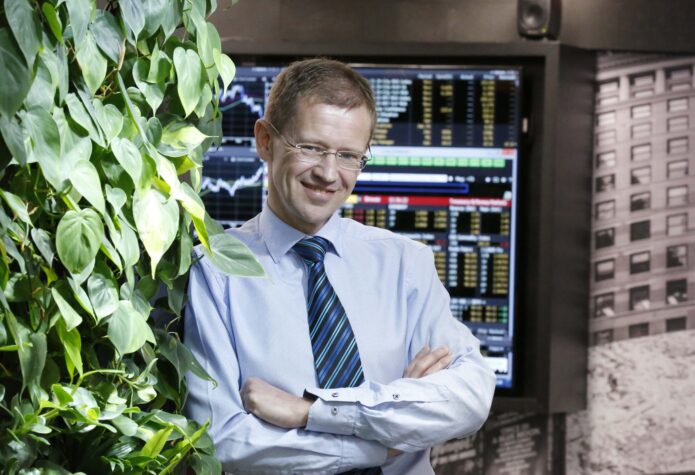Funding outlook 2024: Where will all the money come from?

By Jens Hellerup, Head of Funding and Investor Relations at NIB
As we prepare for the 2024 funding year, a crucial question emerges: where will the necessary funds come from? In this column, I will shed light on the meticulous process we undertake at NIB and offer insights into the strategies shaping our approach in the coming year.
There are some routines at every funding desk, and one of the pre-Christmas tasks is to decide on next year’s funding volume. We have a rolling funding plan, which means that every day we look one year ahead and make sure NIB can meet all its obligations. However, our external stakeholders such as investors and banks need to know what to expect from us next year, so we usually communicate a range for the upcoming period.
For 2024, we expect to fund between EUR 8.0 billion and EUR 9.5 billion.
While deciding on the volume is an important first step, coming up with a strategy for the “how to fund” is more challenging. Some aspects don’t change much: we can’t rely on one funding market, so diversification in terms of currencies, products and markets is important. The funding cost is another critical part: our loans need to be competitive for our clients, otherwise it would be difficult for NIB to fulfil its mandate to finance a sustainable future.
However, there are some challenges: the uncertainty that comes with the changed central banks’ interest rate policies makes investors’ demand more unpredictable. Another topic is supply, European issuers’ funding programmes will be larger next year.
This happens at a time when the US treasury increases issuance and the European Central Bank is likely to end its bond buying programme and competing asset classes, like covered bonds, are offering attractive investment levels. We will have to see if part of this supply will show up in other markets. If it does, then it might also impact the USD supra global benchmark market. On the other hand, higher interest rates and the expected normalisation of the yield curve should be supporting demand, so there is probably a good balance between opportunities and challenges in 2024.
Investors should expect a similar bond offering from NIB in 2024 as to previous years.
We will issue at least two USD global benchmarks with a minimum size of USD 1 billion, probably with five- and three-year maturities.
Investments in NIB Environmental Bonds (NEBs) support the very best green lending projects and we will make them accessible through a EUR denominated benchmark and issuance in the Nordic currencies.
Further, NIB will look at the opportunities in other currencies markets: besides the Nordic currencies, British pounds and Australian and New Zealand dollars, for example. Finally, we will continue to fulfil specific investment needs for single investors by offering private placement transactions.
While achieving the funding volume is important, the funding team also needs to make sure investors remain committed to NIB going forward. Sharing NIB’s thinking is crucial for securing support, and there are some exciting new developments to talk about in 2024.
NIB’s new Climate strategy was launched at COP28. We will explain NIB’s ambitions regarding climate and transition for the whole balance sheet to investors. This addresses a trend we have been observing for some time now: a growing number of investors consider the whole ESG profile of an issuer before they put their money to work.
Our framework for issuing green bonds, our NEBs, needs an overhaul, so we’re reviewing and updating it. We will take the EU taxonomy into consideration and obtain a new second opinion for the framework. Once finalised, explaining the changes to investors will be an important task. So, there is plenty to look forward to.
Looking back at this year’s results, NIB’s funding team remains confident about the tasks ahead.
In 2023, we funded a large part of the programme before the summer, and that turned out to be the right decision. In the first quarter, we issued both a five-year USD benchmark and a euro-denominated NEB—in hindsight, good timing, as the markets were more challenging after the summer. Our second global benchmark offering was somewhat unusual: a bond with a slightly long two-year maturity instead of the typical three years. This was due to some internal considerations, but it also allowed us to offer a five percent coupon to investors, which proved a very attractive proposition.
NIB issued bonds in ten different currencies for an amount of about EUR 7.1 billion, including a return to the CHF market after a more than ten-year hiatus.
Finally, Santa Claus came early to the funding team: market participants elected NIB as the Kanganews “Kauri issuer of the year for 2024”—a nice token of appreciation for our funding activities in New Zealand dollar denominated bonds.